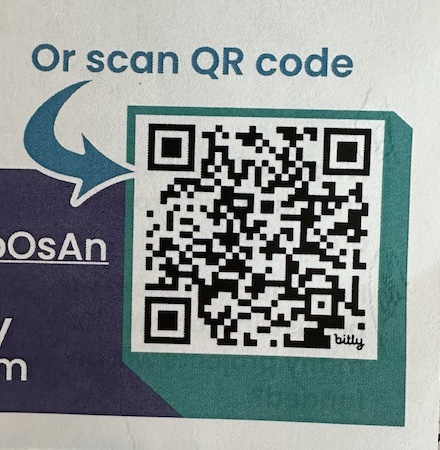By Mary Alice Murphy
The New Mexico Interstate Stream Commission (NMISC) is preparing to invest in water projects in the southwest New Mexico four counties of Grant, Luna, Hidalgo and Catron. The listening session at the Grant County Veterans Memorial Business and Conference Center took place on Aug. 14, 2024 to collect input on a proposed pilot funding cycle to open later this year.
[Editor's Note: For the history on the source of funding and the permutations the process went through before arriving at this point, please read starting with "The funding comes from the New Mexico Unit Fund..."and continue to the end.]
The NMISC seeks feedback from local governments, including counties, municipalities and villages, as well as from irrigation districts and acequias, and local community water and utility boards. The deadline for feedback is Aug. 30, 2024.
Those wishing to give feedback can read the policy at the following QR code, at https://bit.ly/3ypOsAn or by emailing

Proposed projects must demonstrate that they meet various considerations. They include that the project:
contributes to regional development;
• contributes to water system resiliency;c
• ontributes to water security;
• contributes to the economic health of the local community;
• protects, enhances or maintains culture lifeways or resources; and
• includes sufficient community engagement and participation.
The engineering and consulting firm that facilitated the listening sessions across the four counties was wsp.com. The main facilitator that evening was Nick Fazio, a native of Catron County.
They presented examples of the types of feedback or input that is most useful. They include:
• Input on key considerations for NMISC decision making;
• Feedback regarding the types of work activities and eligible projects that should be considered "planning and design";
• Input on requirements related to project phasing; and
• How the NMISC can support applicants in technical preparation of applications and other support structures needed to encourage applicant success.
After the presentation, those representing wsp.com and the NMISC visited the tables where people were seated to answer questions and hear verbal feedback. They stressed that the feedback should be in writing, so that it can be compiled and put into the process.
The funding comes from the New Mexico Unit Fund, which was legislatively created in 2010 to begin to receive annual funding from the federal Arizona Water Settlements Act. According to he AWSA, the funding was slated to provide funding for water projects in the four counties only.
Groups of stakeholders in the four counties began meeting soon after the AWSA was signed in December 2004 by President George W. Bush. The funding was set aside to make New Mexico whole in its loss of water through the prior Arizona V. California settlements, which provided money and water only to the two states, even though much of the water flowed through New Mexico. The Gila River has its headwaters in New Mexico and feeds the other two states. The settlements made sure that the entities such as the San Carlos Reservation and the Central Arizona Project (CAP) retained their rights.
The AWSA finally included New Mexico in these rights to the water and funding to help the four counties access the water.
The AWSA stated that ultimately the funding could be authorized for use by the New Mexico CAP Entity approved projects.
The stakeholder groups morphed into other groups, usually through gubernatorial requests, throughout the years, culminating in the establishment of the NM CAP Entity, made up of representatives from the four countries.
However, politics in New Mexico being what it is, the state, in conjunction with the U.S. Bureau of Reclamation and radical environmental groups, threw barrier after barrier toward every step taken by the NM CAP Entity.
ln 2021, the NM Legislature, with pressure from environmental groups, passed through both chambers House Bill 200, to take the money away from authorization by the NM CAP Entity and give it to the Water Trust Board (WTB) for determining the projects. The NMISC continues to administer the funding, which has grown from the original allocated $60 million, with 49 percent of it invested, to more than $108 million
In the three years since that process, the WTB had created no process for applications through the NMISC to the WTB for consideration.
This year, the NMISC has decided to open a Pilot Funding Cycle to create, test and refine an application process for future funding cycles.
[Editor's Note: Even if you are not one of the entities that will file applications, as a water user (everyone who uses water from the sink, a well or a bucket), you should give feedback to the process. It may keep your faucet running in the future. You might also talk to your local water provider and discuss the issue with them.]w










